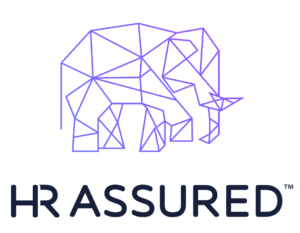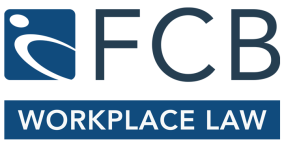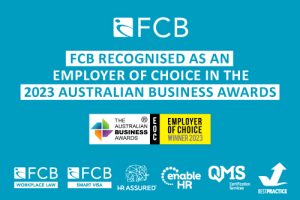Compliance during COVID-19: restructuring the employment framework to engage in a hybrid workforce model
May 31, 2022Prior to the COVID-19 pandemic, the Productivity Commission estimated that only 8 per cent of the Australian workforce had access to regular working from home (WFH) arrangements in place. However, within weeks of COVID-19’s beachhead onto Australian shores, that number had dramatically risen to 38 per cent of the Australian workforce undertaking their work from home [1].
Without a doubt, WFH is one of the most dramatic shifts in the way Australians have performed work in the last few decades, perhaps even the last hundred years. It is unlikely that even if we are able to successfully live with or eradicate COVID-19, working from home arrangements are going to continue to form a substantial portion of how work is performed. This will have profound impacts not only on the way in which we work but also on workplace relations governance and how businesses seek to manage their operational and compliance risks.
However, this transformation has not been homogenous; there has been very little growth, if any, of workplace flexibility for blue and grey collared workers. While the pandemic has predominantly impacted these types of workers in relation to shutdowns, redundancies and managing the intricacies of the numerous public health orders and directions, they have not been exposed to WFH opportunities in the same way as the management staff that oversee this type of workforce have been.
With the rush to maintain business continuity which commenced in March-April 2020, for some employers, it hasn’t yet stopped, and the question of an organisation’s legal compliance was often pushed into the background. An organisation’s very survival, including minimising operating costs, preventing staff from contracting COVID-19, and attempting to maintain a customer/client base, were the main priorities. As such, whilst a number of organisations have taken some steps to harmonise their WFH arrangements, a lot of businesses are still operating on the same or very similar WFH setups as were deployed at the beginning of the pandemic.
It is without a doubt that a huge number of organisations have cut corners and traded off employee goodwill during these periods to make ends meet. There are serious concerns, which we are seeing playing out now, that the employee goodwill which has been stretched for so long is fraying and translating into dissent, job transition and compliance complaints.
So what are the risks associated with this dramatic change in workplace relations?
Hybrid workforce models
Throughout the pandemic, there have predominantly been five types of working models developed:
- All in the workplace – classic workforce model.
- All out of the workplace – fully remote working.
- Fixed days in the workplace and fixed days out of the workplace.
- Fixed number of days in the workplace but flexibility as to when they occur.
- Full flexibility – employee discretion as to where to work. [2]
While models three, four and five largely reflect the new hybrid working models resulting from the pandemic, there is not yet agreement as to which work better for which type of businesses. Interestingly, there is a significant difference between which of the models are preferred by organisations versus employees’ preferences.
Engagement model structures
Before the pandemic, most organisations could clearly delineate their workforce engagement models based on several criteria, such as location, seniority, and function. However, with the transition into irregular and fluid working arrangements, many organisations now have various working arrangements with their staff as part of the WFH deployment. As a result, rather than treating the entire workforce as one, we are increasingly encountering situations in which employees’ working conditions and engagement models are being managed according to their team or function. For example, in the early stages of the pandemic where office staff were largely stood down and only frontline workers were working to keep the lights on, and then later on, when stores, venues and other customer-facing premises were closed during lockdowns and only office staff could continue to work in a remote manner. This has required many businesses to manage multiple forms of engagement models in addition to, and sometimes in substitution of, the pre-pandemic structures.
As an example, we’ve set out below the common operational engagement model flux across the pandemic:
| Pre-pandemic | Model 1 – All in the workplace. |
| First wave | Model 2 – All out of the workplace = stand downs. |
| False dawn | Models 3 or 4 – Hybrid work + model 1 for blue/grey collar. |
| Second wave (Delta variant) | Model 2 -All out of the workplace except essential workers |
| Recovery and vaccination drive | Models 3, 4 and 5 – Hybrid Work + model 1 for blue/grey collar. |
| A new norm | Model 1 all in the workplace (compulsory vaccination requirements) + hybrid model. |
Legislative governance
Unfortunately, almost none of the current industrial relations frameworks for National System Employers specifically address working from home mechanisms. The Productivity Commission estimates that only 3 per cent of Enterprise Agreements address this issue (however, it must be noted that a substantial portion of the total population of employees subject to Enterprise Agreements is covered by this percentage). Awards are mostly agnostic to a workplace location and contain limited facilitative agreement terms to negotiate with individual employees on certain issues. Flexible working mechanisms cannot be reliably driven through individual flexibility agreements (IFAs) as they are either negotiated down to cover very limited terms in Enterprise Agreements or otherwise when they allow a more robust subject matter, they are capable of being terminated with notice at any time.
Similarly, flexible work requests[1] have limited demographic coverage and are not open to all forms of workers. By and large, the regulation of WFH mechanisms, both before and during the pandemic, has primarily been driven by the framework of contracts and policies. Given that it is a working mechanism that has grown from 8 per cent to 38 per cent of our workforces as outlined above, there is little doubt that this is an area which is desperate for, and is expected to see, regulatory attention in the near future[2].
Until these changes arrive, organisations have needed to operate WFH models in a regulatory environment that has not been fit for purpose.
Since the onset of the pandemic, we have seen a lot of organisations deploy non-compliant and risky work practices that present clear breaches of industrial instruments, including:
- Failing to record working hours where employees are working remotely due to the difficulties in tracking hours of work and the temptation/necessity of checking emails or taking calls outside of standard work hours.
- Underpaying overtime or requiring unpaid overtime to be worked: “We need all the staff to dig deep for……[insert excuse]”.
- Failing to pay afternoon/evening loadings, particularly in circumstances where such shifts were not traditionally worked.
- Excessive or unpaid call backs/return to duty: “Sorry to call so late, I just want you to…..”
- Failing to take into account actual working hours when calculating annualised salary arrangements, given that few organisations have been able to accurately track employees actual working hours when working remotely.
Considering that many employees affected by the pandemic have been parents conducting home schooling and having to work back late to complete their scheduled tasks, we have seen a very limited uptick in the use of IFAs that could have been deployed to lawfully vary working hours arrangements, such as span of hours, compressed working weeks and changes to start and finish times. However, as discussed above, IFAs have limited utility when it is the overall shape of employment which has changed, not just the preferences of one or two individual employees.
Getting back on track
Assuming that we are looking to be on the exit end of the pandemic, there’s no better time to take stock of the risks posed to a business resulting from any corners which may have been cut during the frantic response to the pandemic.
We recommend that all organisations that have deployed WFH models conduct a comprehensive review of their industrial relations governance to assess whether any of these models present hidden labour costs, taking into account:
- If your business has an Enterprise Agreement: what does it say about working in different locations? Are there any allowances for remote work? Is the coverage of the instrument site-specific, such that WFH potentially means it no longer applies to the relevant employees?
- If your business is covered by any Modern Awards: do they allow individualised facilitative provisions for altered working structures? If so, what records need to be kept?
- If you have IFAs in place: are they up to date? Do you need to implement fresh agreements each time staff move between hybrid models three, four and/or five?
- Have you undertaken a sample audit or compliance review of your remuneration practices to ensure that employees have been appropriately and lawfully compensated while working across various models of work, including remote work performed out of hours?
This is also a pivotal time for ensuring that employment contracts are fit for purpose. While you may be updating your contracts for mandatory vaccination requirements, it’s vital to ensure that other clauses are considered for their suitability in the new working environment, such as:
- Location of work clause: does it allow you to assign a person to work from a different location? Are any allowances payable? Or does a different location require a whole contract variation?
- Set-off clauses: can the employee’s remuneration be set off against any other entitlements which may arise?
- Reporting lines: who holds the employee accountable if they’re not in the usual workplace?
- Notifications of illness/injury: who should the employee reach out to when working remotely in the event of an incident?
- Positive obligations on self-disclosure of particular issues: what do your employees need to keep you updated about, and when?
- Confidential information, post-engagement restraints and positive duties of good faith: how is your business protected during and after an individual’s employment?
Organisations should also conduct a comprehensive review of their workplace policies to countenance hybrid working models, or otherwise risk being unable to properly advance disciplinary action for protocol breaches.
Other areas for business consideration include managing tree changes and employees wanting to work flexibly across state boundaries. Some of the obvious compliance risks include, but are not limited to:
- Long service leave accrual and entitlements vary across Australian jurisdictions. An organisation needs to carefully consider rates, accruals and rules as to when leave can be taken or must be paid out.
- Public holidays are available in the place where the employee is based for work purposes and not where they report to or where the head office is located.
- Each state or territory has different thresholds and rates for payroll tax.
- Workers compensation premium costs and rules vary between each state or territory, and insurance must be held in each jurisdiction in which a business has a worker.
- Workplace surveillance laws vary across the country, governing recordings of company meetings and videoconferences.
Summary
The pandemic has been a huge driver for change in workplace models across various sectors and engagement types. It has forged a clear split between those who can and can’t take up WFH options. The pandemic pushed many organisations into various forms of hybrid working models, but out of necessity and not design, meaning that few were truly prepared to manage the full extent of remote working arrangements.
Moving forward each business should, before adopting a hybrid working model:
- assess the governing industrial and employment frameworks to create models that are lawful and capture records to prove it;
- assess the appropriateness of its contracts, policies and procedures in a hybrid model; and
- understand the compliance impacts for employee rights and entitlements, workplace safety and the risk of undetected aberrant behaviours.
These are not insurmountable difficulties but just require forethought and broad-based risk assessments.
If you have a question about restructuring your business’s employment framework, get in touch with Matthew Robinson.
[1] Productivity Commission: Working From Home Research Paper 23 September 2021
Data from HILDA surveys show the percentage of people who have a formal agreement to work from home. Australian Bureau of Statistics (ABS) Census data shows the percentage of people who responded that they worked from home — rather than commuting to work — on the day of the census. Household impacts of COVID-19 survey data shows the percentage of respondents who worked from home one or more times a week in the four weeks prior to the survey. Household impacts of COVID-19 data are from the September 2020 and June 2021 surveys.
[3] Productivity Commission: Working From Home Research Paper 23 September 2021
[4] See section 65 of the Fair Work Act 2009 (Cth).
[5] As an example, one of the upcoming changes to the Social, Community, Home Care and Disability Services Industry Award 2010 later this year is to include a ‘remote response’ clause where authorised remote work outside of an employee’s ordinary hours will be subject to specific penalties with small minimum payment periods.

























